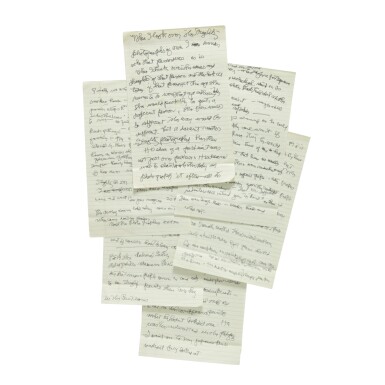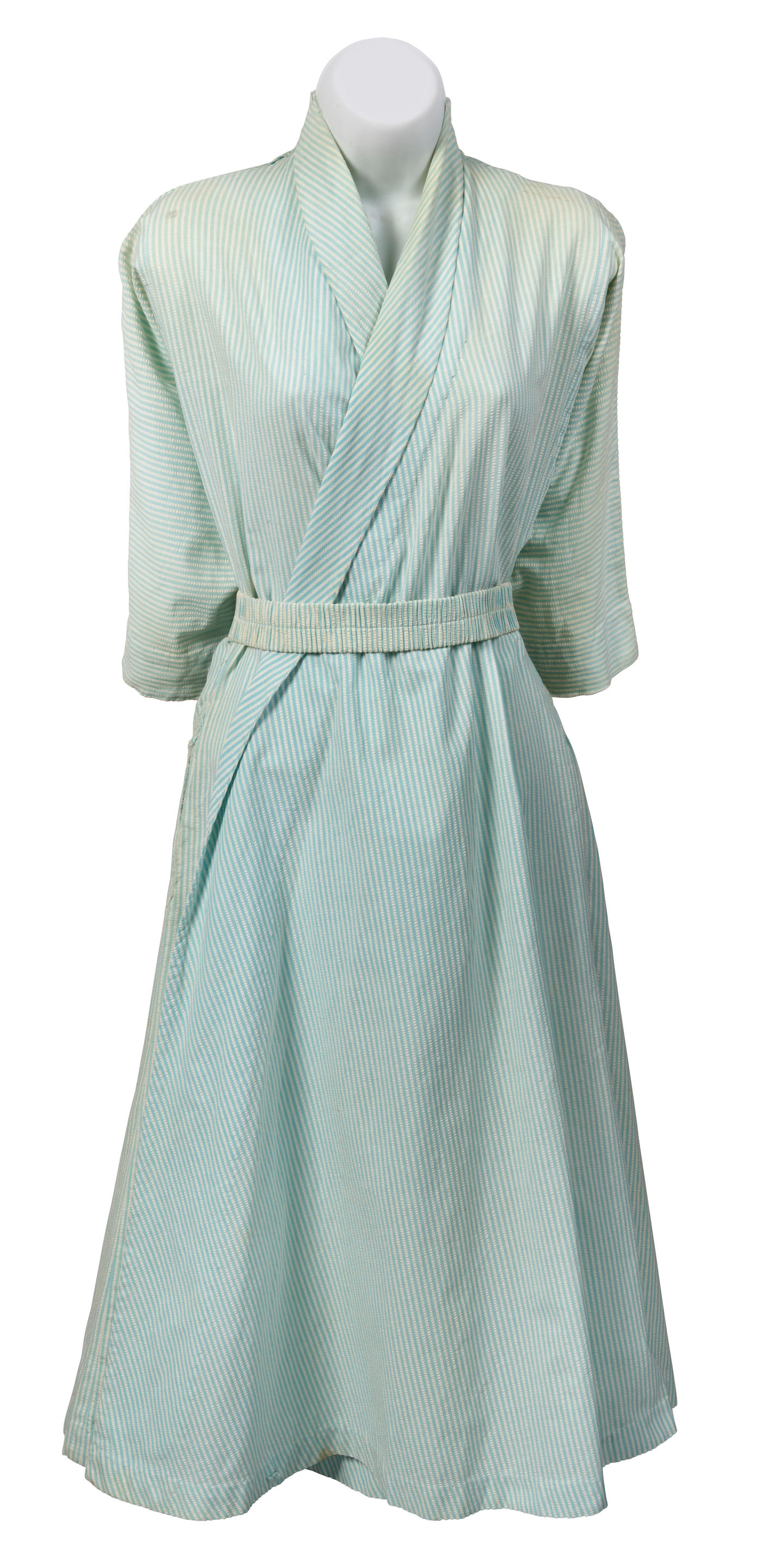Georgia O'Keeffe Yellow Jonquils IV 1936 Oil on canvas. 40 x 36 in. (101.6 x 91.4 cm.)
Provenance Harold Diamond, New York, NY (1977); Elaine Horwitch Gallery, Scottsdale (1978); Private collection, Palm Springs, California (1988); Doris Bry, New York; Gerald Peters Gallery, Sante Fe; Private Collection Exhibited Scottsdale, Elaine Horwitch Gallery; Denver Art Museum; Washington, D.C., National Collection of Fine Arts; San Francisco Museum of Modern Art and Seattle Art Museum, The First Western States Biennial Exhibition, March 7, 1979 – July 13, 1980; Dallas, Gerald Peters Gallery, Georgia O’Keeffe: Selected Paintings and Works on Paper, June 14 – July 14, 1986 Literature B. Buhler Lynes, Georgia O’Keeffe Catalogue Raisonné, Volume One, New Haven and London, 1999, p. 556, no. 890 (illustrated in color); H. Drohojowska-Philp, Full Bloom: The Art and Life of Georgia O’Keeffe, New York, 2004, p. 364 (discussed) Catalogue Essay In 1970, when she was 83 years old, a retrospective exhibition of her work was held at the Whitney Museum of American Art. The New York critics and collectors and a new generation of students, artists and aficionados made an astonishing discovery. The artist who had been joyously painting as she pleased had been a step ahead of everyone, all the time. (Edith Evans Asbury, “Georgia O’Keeffe; Shaper of Modern Art in U.S.,” The New York Times, March 7, 1986) Georgia O’Keeffe’s legendary oeuvre spans from the early days of American modernism to the Abstract Expressionist movement that dominated the fifties and sixties. O’Keefe’s profound abstract interpretations of nature made enormous contributions to American Modernism, and established her reputation as one of the most successful and beloved American artists of the twentieth century. Born to a family of farmers in Wisconsin, the expansive landscape and rhythms of country life would have lasting impressions on O’Keeffe’s work. The artist claimed she established her visual memory before she could walk, recalling details of a patchwork quilt and “the brightness of light…light all around” (Written by the artist as she was approaching her 90s). By the time she turned twelve years old, O’Keeffe made the decision to become an artist. O’Keeffe studied at the Art Students League in New York under the tutelage of William Merrit Chase, who ignited the artist’s passion for color. O’Keeffe’s early experiments demonstrate what would become a life-long relationship with the materiality of color, form and volume. During her studies, O’Keeffe read Wassily Kandinsky’s Concerning the Spiritual in Art, a thesis favoring the inner spiritual world as the artist’s truest source of inspiration. Kandinsky’s theories on the organic approach to form and color made lasting impressions on O’Keefe’s work. O’Keeffe’s large-scale compositions are taken from carefully composed viewpoints influenced by modern photography, a resonance her husband Alfred Stieglitz identified in her work. Stieglitz worked tirelessly to promote American modernism as a photographer, gallery owner and art dealer. O’Keeffe and Stieglitz were valued members of an avant-garde circle of artists, writers and critics steering the dialogue on European and American modernism in New York. O’Keeffe and Stieglitz exchanged ideas and sources of inspiration in their shared passions for the abstract qualities in nature, which fueled O’Keeffe’s work with new energy and sensitivity. “A flower is relatively small. Everyone has many associations with a flower, the idea of flowers. You put out your hand to touch the flower, lean forward to smell it, maybe touch it with your lips almost without thinking, or give it to someone to please them. Still, in a way, nobody sees a flower, really, it is so small, we haven’t time, and to see takes time like to have a friend takes time. If I could paint the flower exactly as I see it no one would see what I see because I would paint it small like the flower is small. So I said to myself, I’ll paint what I see, what the flower is to me but I’ll paint it big and they will be surpris
Georgia O'Keeffe Yellow Jonquils IV 1936 Oil on canvas. 40 x 36 in. (101.6 x 91.4 cm.)
Provenance Harold Diamond, New York, NY (1977); Elaine Horwitch Gallery, Scottsdale (1978); Private collection, Palm Springs, California (1988); Doris Bry, New York; Gerald Peters Gallery, Sante Fe; Private Collection Exhibited Scottsdale, Elaine Horwitch Gallery; Denver Art Museum; Washington, D.C., National Collection of Fine Arts; San Francisco Museum of Modern Art and Seattle Art Museum, The First Western States Biennial Exhibition, March 7, 1979 – July 13, 1980; Dallas, Gerald Peters Gallery, Georgia O’Keeffe: Selected Paintings and Works on Paper, June 14 – July 14, 1986 Literature B. Buhler Lynes, Georgia O’Keeffe Catalogue Raisonné, Volume One, New Haven and London, 1999, p. 556, no. 890 (illustrated in color); H. Drohojowska-Philp, Full Bloom: The Art and Life of Georgia O’Keeffe, New York, 2004, p. 364 (discussed) Catalogue Essay In 1970, when she was 83 years old, a retrospective exhibition of her work was held at the Whitney Museum of American Art. The New York critics and collectors and a new generation of students, artists and aficionados made an astonishing discovery. The artist who had been joyously painting as she pleased had been a step ahead of everyone, all the time. (Edith Evans Asbury, “Georgia O’Keeffe; Shaper of Modern Art in U.S.,” The New York Times, March 7, 1986) Georgia O’Keeffe’s legendary oeuvre spans from the early days of American modernism to the Abstract Expressionist movement that dominated the fifties and sixties. O’Keefe’s profound abstract interpretations of nature made enormous contributions to American Modernism, and established her reputation as one of the most successful and beloved American artists of the twentieth century. Born to a family of farmers in Wisconsin, the expansive landscape and rhythms of country life would have lasting impressions on O’Keeffe’s work. The artist claimed she established her visual memory before she could walk, recalling details of a patchwork quilt and “the brightness of light…light all around” (Written by the artist as she was approaching her 90s). By the time she turned twelve years old, O’Keeffe made the decision to become an artist. O’Keeffe studied at the Art Students League in New York under the tutelage of William Merrit Chase, who ignited the artist’s passion for color. O’Keeffe’s early experiments demonstrate what would become a life-long relationship with the materiality of color, form and volume. During her studies, O’Keeffe read Wassily Kandinsky’s Concerning the Spiritual in Art, a thesis favoring the inner spiritual world as the artist’s truest source of inspiration. Kandinsky’s theories on the organic approach to form and color made lasting impressions on O’Keefe’s work. O’Keeffe’s large-scale compositions are taken from carefully composed viewpoints influenced by modern photography, a resonance her husband Alfred Stieglitz identified in her work. Stieglitz worked tirelessly to promote American modernism as a photographer, gallery owner and art dealer. O’Keeffe and Stieglitz were valued members of an avant-garde circle of artists, writers and critics steering the dialogue on European and American modernism in New York. O’Keeffe and Stieglitz exchanged ideas and sources of inspiration in their shared passions for the abstract qualities in nature, which fueled O’Keeffe’s work with new energy and sensitivity. “A flower is relatively small. Everyone has many associations with a flower, the idea of flowers. You put out your hand to touch the flower, lean forward to smell it, maybe touch it with your lips almost without thinking, or give it to someone to please them. Still, in a way, nobody sees a flower, really, it is so small, we haven’t time, and to see takes time like to have a friend takes time. If I could paint the flower exactly as I see it no one would see what I see because I would paint it small like the flower is small. So I said to myself, I’ll paint what I see, what the flower is to me but I’ll paint it big and they will be surpris
.jpg)

.jpg)

.jpg)
.jpg)
.jpg)






.jpg)
.jpg)
Try LotSearch and its premium features for 7 days - without any costs!
Be notified automatically about new items in upcoming auctions.
Create an alert